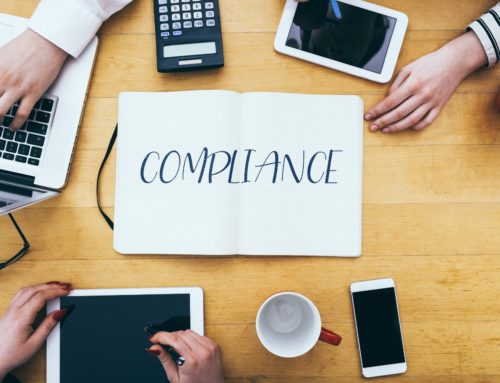A constant concern being identified in workplaces around the world is gender equality, or more specifically the gap between the weekly earnings of men and women. UN Women estimates women world-wide make approximately 77 cents for every dollar earned by men. Not only does this impact the life of working women, but also means women are more likely to retire into poverty. It is also important to acknowledge that this gap widens for women of colour and immigrants. However, in the last few decades, Australian employers have become more conscious about the Gender Pay Gap in their workplaces. Employers and business owners have implemented actions to bridge this gap, decreasing the national Gender Pay Gap to approximately 13.8%.
Good Business owners are good leaders. A good leader is not only someone who has the ability to motivate their people and ensure the success of their business, they are also an advocate and leader for change. This can be internally within the business, and societal change. Bramwell Partners’ Directors Wayne and Tameka are currently trying to live by these ideals by recently taking part in the CEO Sleepout that was held on the 23rd of June.
As a current and relevant topic to the workplace today, it is important that business owners are aware of how they can take part in inspiring change. Throughout this blog article we will look at how the pay gap can be calculated, how you can implement change within your business, and how this change can affect your workplace culture.
The Progress of Pay Equity in Australia
1969 – the Australian Arbitration Commission ruled in favour of ‘Equal Pay for Equal Work’.
This decision applied to men and women who performed in the same industry and role, affecting less than 18% of working women.
1972 – Australian unions and the Whitlam government urged the Australian Conciliation and Arbitration Commission (ACAC) to reconsider their decision in 1969. ACAC reviewed and agreed to “Equal Pay for Work of Equal Value’. This Commissions decision removed distinctions between men and women in the minimum wage provision in modern awards. Additionally, traditional ‘female’ roles began to be assessed for their contribution to the workplace instead of their resemblance to traditional ‘male’ roles.
1986 – The Commonwealth Affirmative Action (Equal Employment Opportunity for Women) Act was created alongside the Affirmative Action Agency, with the intention to eliminate employer discrimination and to promote equal opportunities for women.
1999 – the Affirmative Action Agency is changed to the ‘Equal Opportunity in the Workplace Agency’ to administer the Equal Opportunity for Women in the Workplace Act 1999.
2009 – an Australian House of Representatives Pay Equity report called on the Commonwealth Government to create a clear objective for pay equity in modern awards and recommended the establishment of a federal Pay Equity Unit and the conducting of mandatory pay equity audits for companies with 100 employees or more.
2012 – The Equal Opportunity for Women in the Workplace Act 1999 is replaced by the Workplace Gender Equality Act 2012, including the establishment of the Workplace Gender Equality Agency.
How is the Gap Calculated?
To calculate the Gender Pay Gap (GPG), the Workplace Gender Equality Agency (WGEA) has created the formula below to identify pay gaps between males and females in the same position.

Working in combination with the Australian Bureau of Statistics (ABS), the WGEA has identified the current Gender Pay Gaps in Australia. They found the highest pay gap by state, was Western Australia with 21.2% and the lowest to be South Australia with 7.4%.
Whilst the industry with the highest gender pay gap was the Professional, Scientific and Technical Services with 24.4% and the lowest being Other Services with 3.6%.
The Fair Work Ombudsman believe that Workplaces can achieve gender pay equity when women and men receive equal pay for work of equal or comparable value. This means:
- Men and women completing the same work (or different work of equal or comparable value) get paid the same amount
- Pay and conditions are assessed in a non-discriminatory way – valuing skills, responsibilities and working conditions in each job.
- Organisational structures and process provide all staff equal access to training, promotions or flexible working arrangements.
How Can Business Owners Help to Bridge the Gap?
Bridging the gap can potentially feel like an impossible task for business owners, however there are some simple methods that can be implemented into a business to assist. These are:
- Conducting Annual Equality Impact Assessments –
- Keeping up to date with current legislation and employer requirements –
- Issuing an Equal Opportunity and Anti-Discrimination Policy to employees
- Promoting and encouraging a workplace with equal opportunities and workplace diversity
- Upholding fair compensation and promotion procedures.
- Continued diversity and inclusion training in the workplace.
- Holding management accountable
- Being a public advocate for women’s rights issues.
How Bridging the Gender Pay Gap Impacts Workplace Culture
Good workplace culture can be the difference between a good business and a successful business. This is because staff retention and output can be greatly increased when the company they work for makes them feel valued and aligns with their values.
The Fair Work Ombudsman states the benefits of taking a best practice approach to gender pay equity can include:
- Attracting and retaining talent
- Improved organisational performance
- Reduction in turnover and associated costs.
- Minimisation of legal risk due to maintaining legal obligations
- Accessing new markets
- Building a reputation as an employer of choice
Workplace Gender Equality Act 2012
Large employers (non-public sector employers with 100 or more employees in their corporate structure) and registered higher education providers have to report to the Workplace Gender Equality Agency (WGEA) annually on a set of gender equality indicators.
The gender equality indicators are:
- Gender composition of the workplace
- Gender composition of governing bodies of relevant employers
- Equal remuneration between women and men
- Availability and utility of employment terms, conditions and practices relating to flexible working arrangements for employees and to working arrangements supporting employees with family or caring responsibilities
- Consultation with employees on issues concerning gender equality in the workplace
- Any other matters specified by the Minister: sex-based harassment and discrimination
Summary
Minimizing the gender pay gap in your workplace is not only important to maintain legal requirements, but also plays a critical role in promoting a healthy and supportive workplace culture. Implementing the changes and actions would demonstrate a company’s commitment to supporting all of its employees – no matter their gender.
If you would like advice or assistance to implementing workplace change in your organization and its compliance, contact us, your HR consultants, on (07) 3630 5695 or email us at success@bramwellpartners.com.au.
References
- https://www.legislation.gov.au/Details/C2012C00899
- https://www.fairwork.gov.au/tools-and-resources/best-practice-guides/gender-pay-equity#gender-pay-equity
- https://humanrights.gov.au/education/employers
- https://www.qld.gov.au/jobs/entitlements/discrimination
- https://www.qhrc.qld.gov.au/your-rights/discrimination-law
- https://www.qld.gov.au/law/your-rights/discrimination-and-equality/discrimination-and-your-rights
- https://www.equalityhumanrights.com/en/advice-and-guidance/equality-impact-assessments
- https://www.equalityhumanrights.com/en/advice-and-guidance/what-equal-pay
- https://www.atui.org.au/union-history-blog/the-1969-equal-pay-case
- https://www.nma.gov.au/defining-moments/resources/equal-pay-for-women







